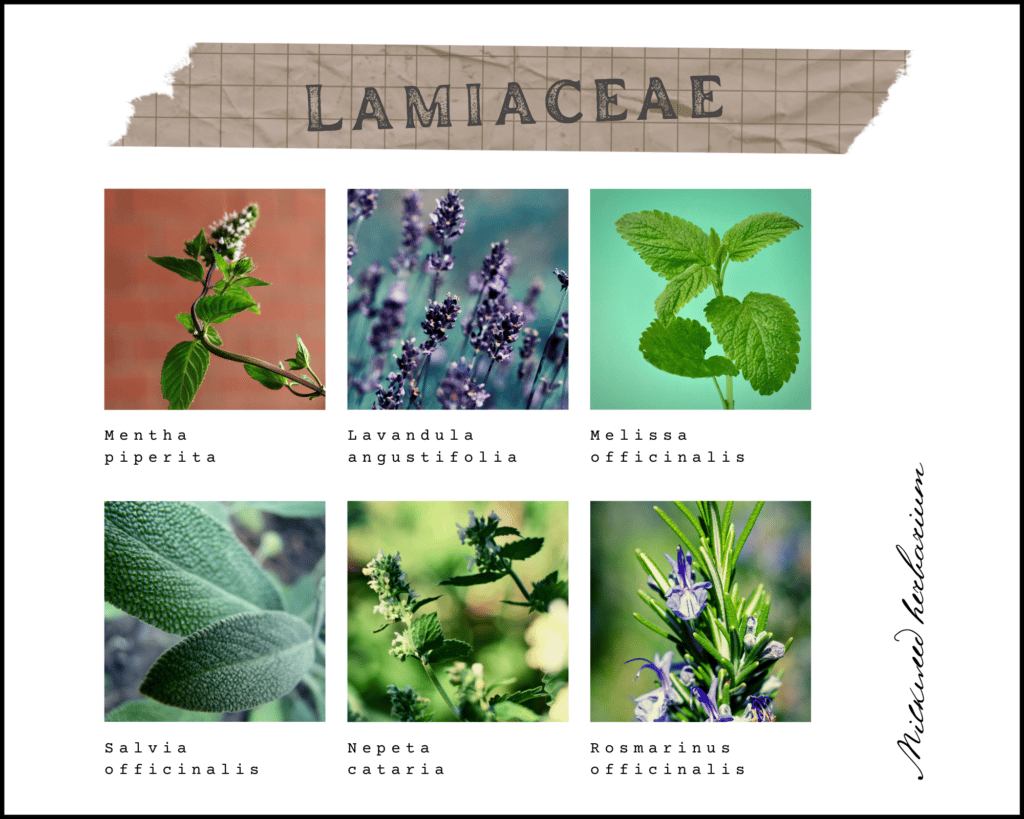
1. Peppermint – Mentha piperita
Peppermint is well-known as a digestive remedy. Tea of Peppermint helps dyspepsia, cramps, and nausea. Although the aroma of the herb is awakening and stimulating, it relaxes intestinal muscles, relieving digestive cramping. Peppermint also induces sweating, and is thus a popular and effective herb to use in a fever tea. Sweeter in flavor but similar in use, spearmint shares many of Peppermint’s digestive uses. It is, however, preferred for nausea a related to headaches and migraines.
2. Lavender – Lavandula angustifolia
Though it may not look like a mint at first glance, Lavender does have all of the characteristics of a Lamiaceae plant. Next time you see a Lavender plant in person, feel the stem. You will notice four corners; a square stem. Though the leaves are more slender than many mints, they are still simple in structure and they grow opposite from each other. Lavender, like other mints, is very high in volatile, aromatic oils. This plant is bitter in taste, and in tea it becomes more bitter the longer it steeps. Bitter flavors help to stimulate bile production, and therefore digestion. Lavender is also calming and uplifting – it supports a sense of confidence, and reduces feelings of stress. Because it stimulates circulation to the head, it can be helpful for stress-related headaches. My favorite ways to use Lavender are as part of a tea blend (a little goes a long way!) or topically as an essential oil. Lavender essential oil is well known for its healing power when applied to burns and skin irritations, but a drop may also be inhaled from a tissue or applied to the temples to help stress and headaches. Keep essential oil away from the eye area, and be aware that too much Lavender has a stimulating – rather than calming – effect.
3. Lemon Balm – Melissa officinalis
A gently cheering nervine, Lemon balm is a great ally for blues and worries that come up because of major life changes – positive or negative. Relaxing and uplifiting, Lemon balm is an ideal remedy for those feeling distressed, cranky, and generally worried. Volatile oils give Lemon balm its appealing citrusy scent, as well as carminitive and diaphoretic action. Tea, tincture, and glycerite are my favorite ways to take this herb, and it’s appropriate for children and adults alike. Lemon balm should be avoided by those with hypothyroidism.
4. Sage – Salvia officinalis
Yet another aid to the digestive system, Sage helps to calm the digestive system and expel gas from the intestines. Sage tea is one of my favorite helpers for inflammations of the mouth, throat, and tonsils. Use it as a mouthwash or gargle, and definitely drink it as tea. Sage also decreases milk production when weaning from breastfeeding. Avoid during pregnancy.
5. Catnip – Nepeta cataria
Catnip is a useful nervine sedative. This means that it helps you reach a state of relaxation and fall asleep. Catnip, Lemon balm, and a pinch of Lavender would make a sleep tea blend. An effective carminitive and antispasmodic, Catnip relieves stomach upset and soothes menstrual cramps.
6. Rosemary – Rosmarinus officinalis
Rosemary, like so many of its relatives, is helpful for digestion. It also helps to stimulate circulation throughout the body, in the extremities, and in the brain. Rosemary’s stimulating effects make it a good fit for supporting memory and cognitive function. Rosemary is one of the ingredients in my mental clarity tea blend, Where Is My Mind?, and essential oil of Rosemary is also helpful during study time; just inhale a drop from a tissue.

I love learning about medicinal herbs within the context of their family group. Studying key characteristics of common plant families can help you learn to see plants differently and identify them with greater ease and accuracy. My favorite resource for information on plant families is Botany in a Day: The Patterns Method of Plant Identification by Thomas J. Elpel. This was the first herb book I ever purchased, and I still absolutely love it.


Leave a Reply